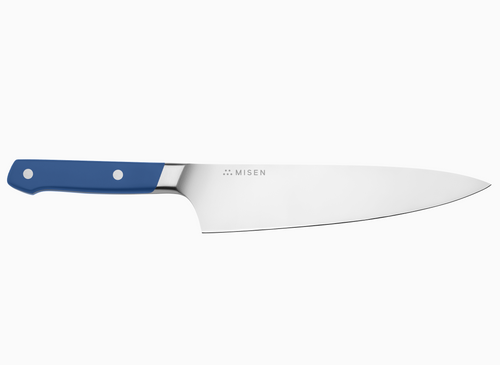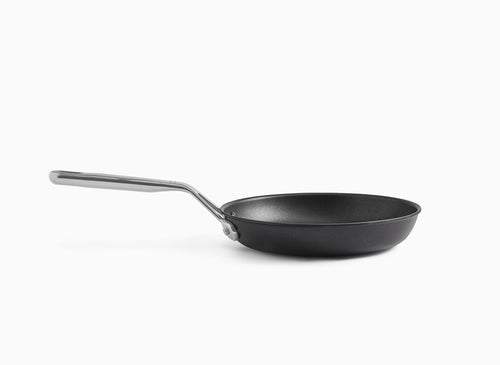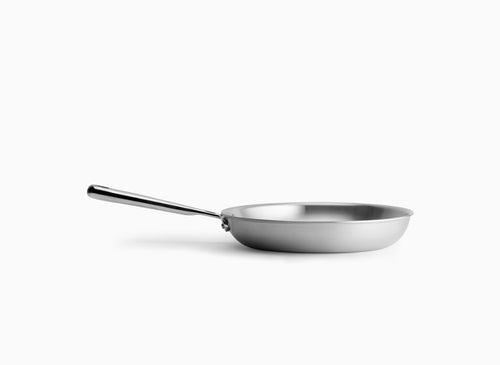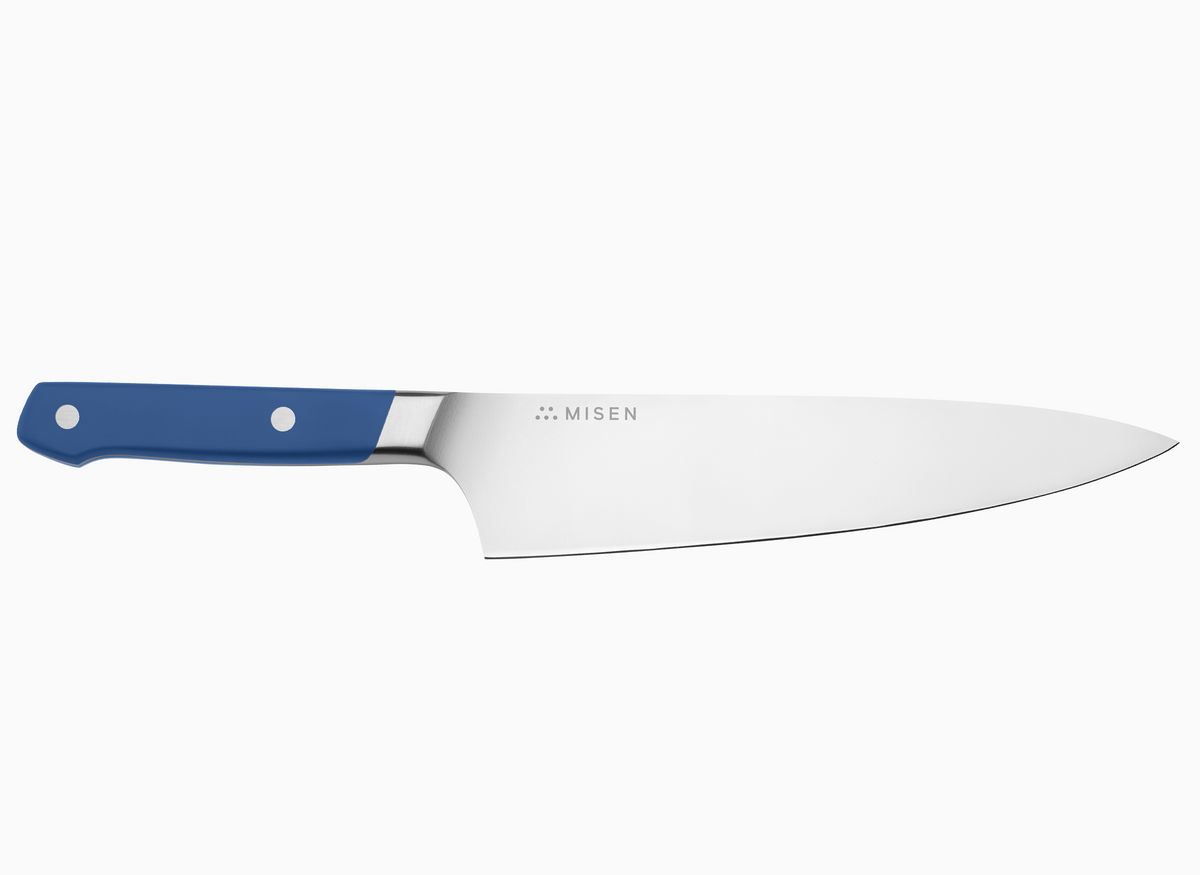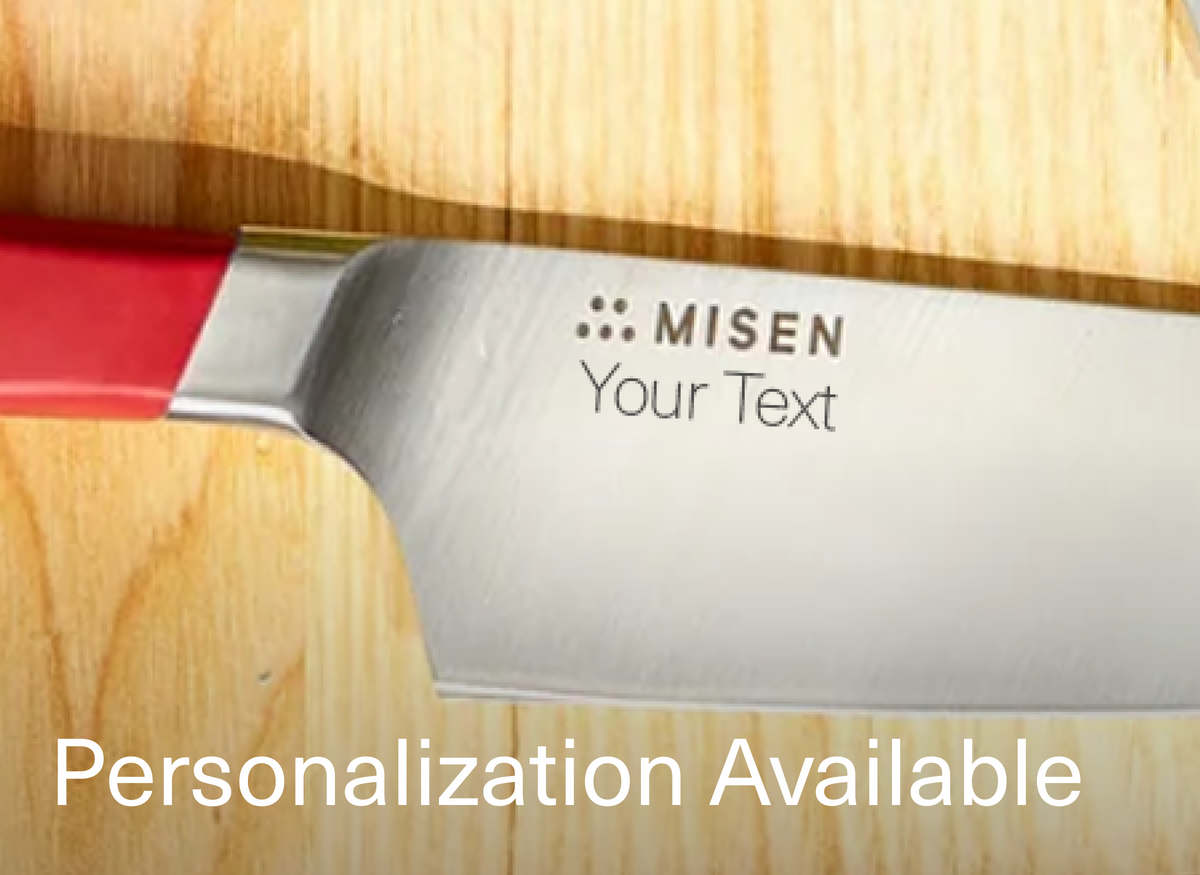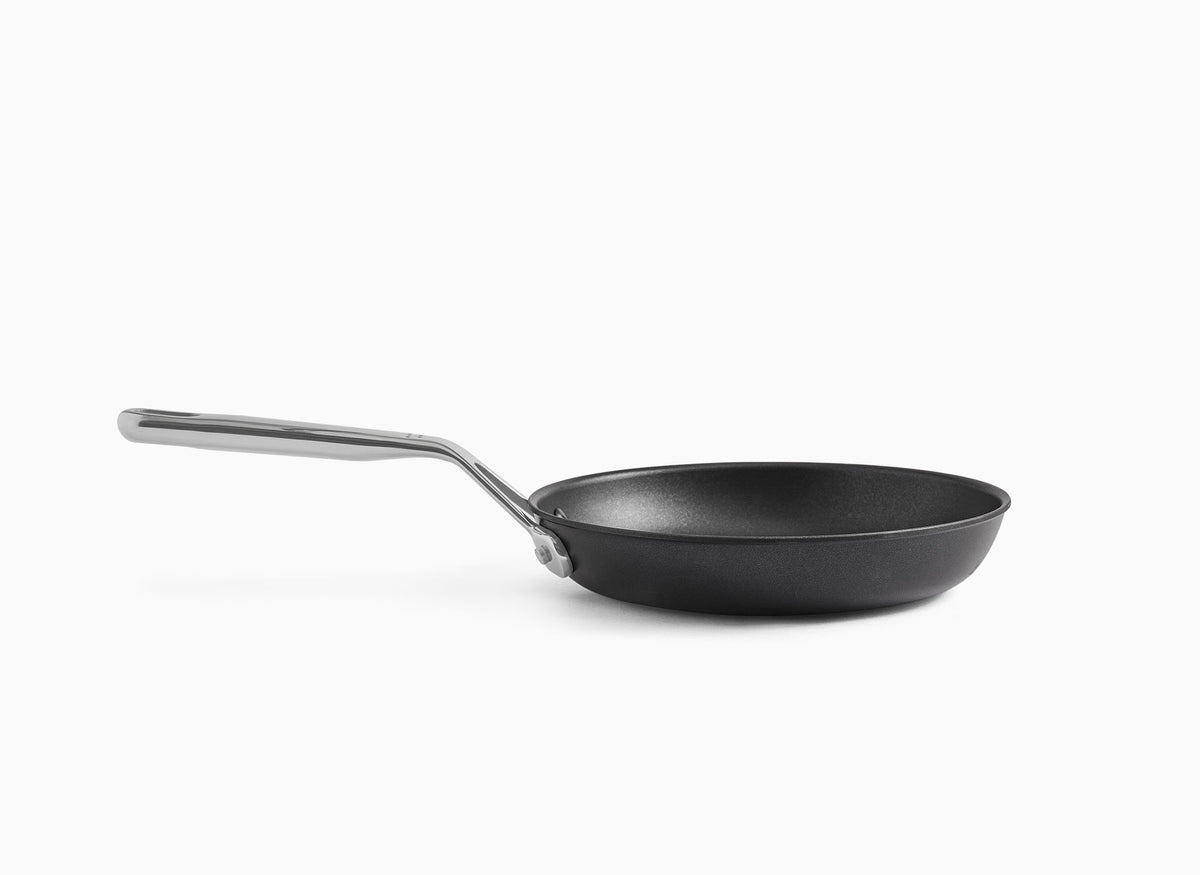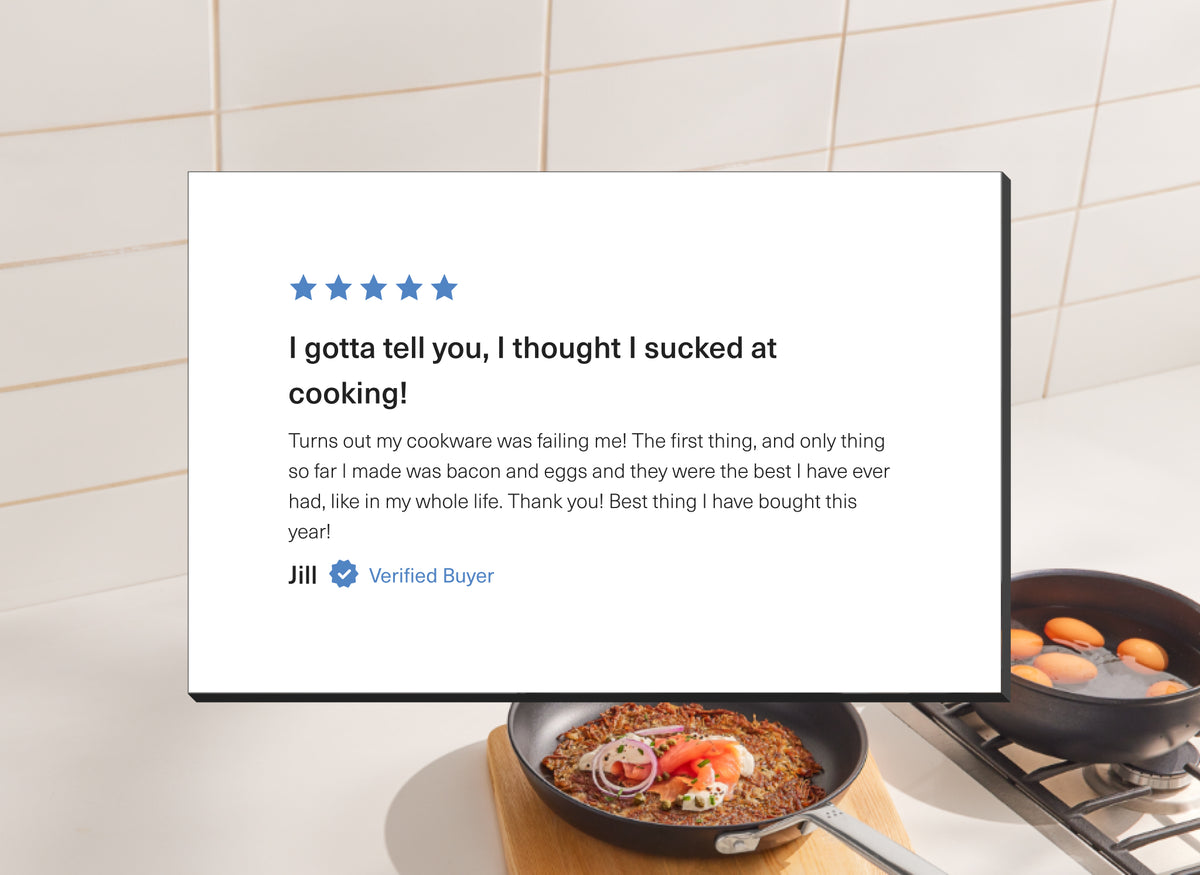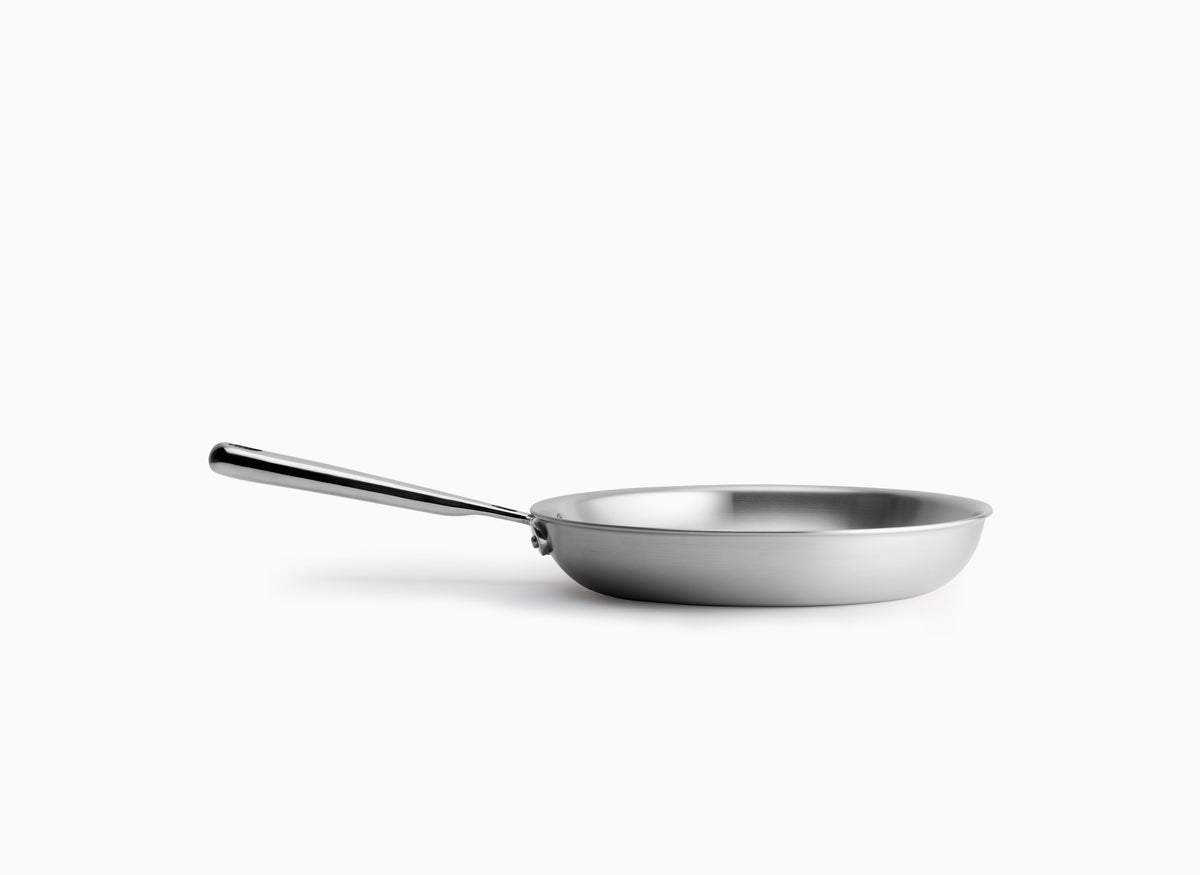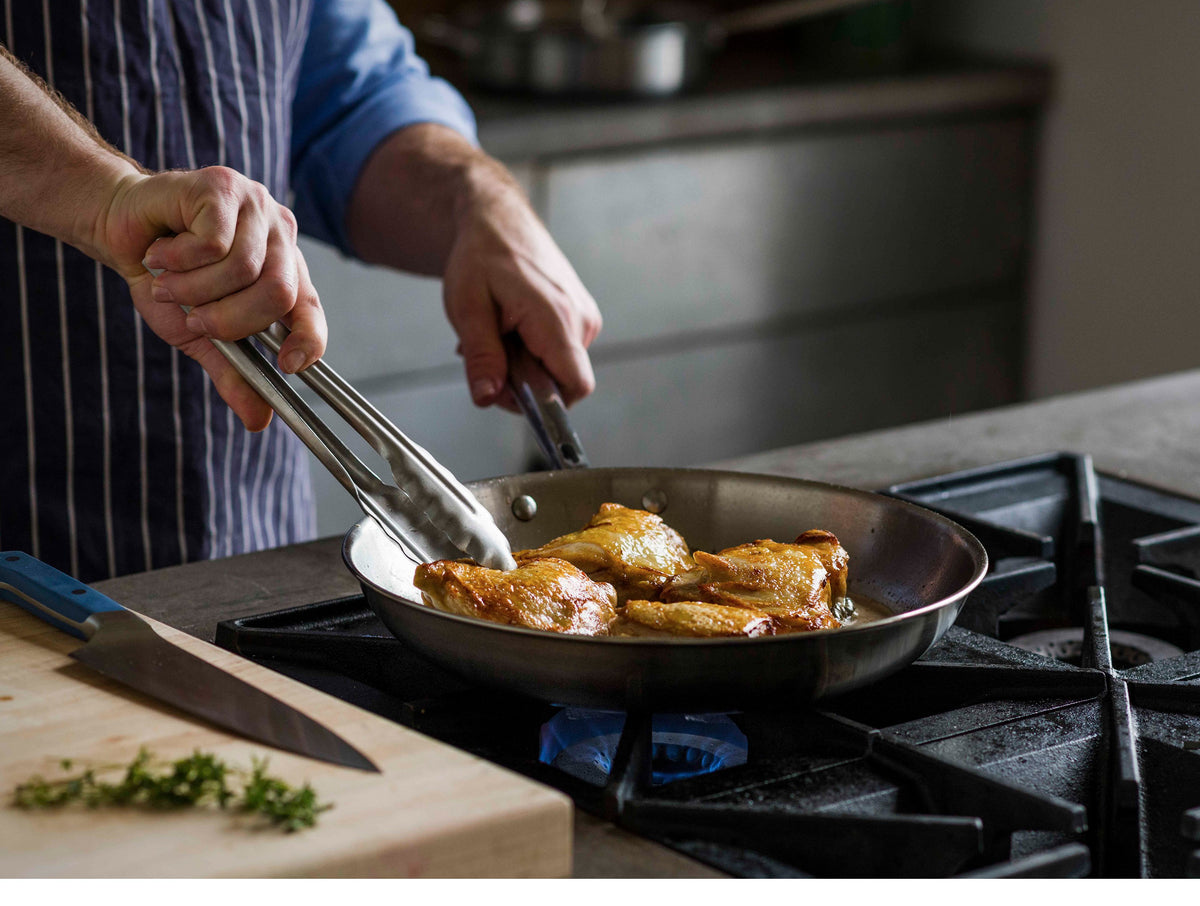The Santoku Knife: From Japan, With Love
 The Misen santoku is perfectly balanced, as all things should be.
The Misen santoku is perfectly balanced, as all things should be.
- A santoku knife has unique advantages in the kitchen and can complement or replace a western-style chef’s knife.
- Using a santoku requires a unique technique.
- Caring for a Misen santoku knife is straightforward and simple.
A santoku knife is a general-purpose knife that has made its way into many a kitchen. Either a santoku knife or a chef’s knife could be a chef’s go-to knife. And many professional chefs have both in their arsenal.
Why Use a Santoku Knife?
There’s no reason to say that a santoku knife is better than a French or German chef’s knife — there’s simply personal and situational preferences. But it can complement any knife set, and many chefs love their santokus. So what are the advantages of a santoku knife?
Steep Beveling
Let’s talk basic knife terminology for a moment. The goal of a knife, of course, is to cut something. The cutting is done with the sharp edge. The edge is formed by the bevel, and the bevel is the angle on the blade that tapers down to the cutting edge.
The angle of the bevel is crucial to the sharpness of the knife. The smaller the angle, the sharper the knife. Most western knives are beveled — i.e. angled — at around 20-22 degrees. Many Japanese knives, including the santoku, are beveled more steeply. Misen’s santoku knife, for example, is beveled at 15 degrees, allowing for an extremely sharp knife.
The main advantage steep beveling provides is that the knife is extra sharp — often much sharper than western knives.
The sharpness of a santoku knife allows for extremely fine slicing or chopping, which is critical in many Japanese dishes, especially sushi. The santoku allows for a great deal of precision when slicing meat, vegetables, or fruit, allowing for paper-thin cuts when necessary.
A traditional santoku knife is only beveled on one side, meaning the other side is flat. However, many western manufacturers, including Misen, produce santoku knives that are double-beveled like most knives western chefs are familiar with.
Size, Weight, and Blade Shape
A santoku knife is slightly shorter and lighter than a traditional chef’s knife. It also has a flat blade and tapers to a rounded ‘sheep’s foot’ point at the tip. Its unique shape and smaller size translates into a few distinct advantages:
- A santoku is great for people with small hands.
- Some people prefer the fact that a santoku is lighter than a chef’s knife.
- Because the blade is thinner than a chef’s knife, a santoku stands less chance of crushing food or producing rough cuts.
- A santoku’s flat, broad blade makes it a breeze to scoop food off a cutting board.
- Because the point of the knife is rounded on one side, you run less risk of puncturing or stabbing something by accident.
Santoku Knife Technique
 A santoku is ideal for sushi cuts.
A santoku is ideal for sushi cuts.
Because of its shape, a santoku requires a different technique than a western chef’s knife. A chef’s knife has a curved blade that allows it to rest on a cutting board and rock back and forth to finely chop, dice, or mince. A santoku, however, is flat rather than curved, meaning it can’t rock on the cutting board.
Rather than resting on the cutting board, a santoku only meets the cutting board towards the end of a cut. Cutting with a santoku requires more wrist action: You push down and forward with the blade as you cut, finishing with the knife touching the cutting board. Then lift and repeat.
While this may take some practice, once you get experienced using a santoku can often lead to more efficient and finer cuts than a chef’s knife.
Caring for a Santoku Knife
Misen’s santoku knife is made of strong, high-carbon AUS-8 steel from Japan. It’ll arrive sharp and ready to use and will keep its sharp edge for quite some time.
However, all blades need to be cared for properly — and that includes washing and sharpening.
Washing
Properly cleaning your blade is one of the most important things you can do to preserve it. Fortunately, the cleaning part is fairly straightforward as long as you follow certain guidelines.
First, make sure you always clean the knife by hand immediately after it’s been used. The best way to do this is with regular dish soap, water, and a sponge. Gently scrub off any food stuck to the blade with a sponge, making sure the blade faces away from you. Wash both sides with the soapy sponge, rinse the knife off thoroughly, and dry it with a towel.
Don’t use steel wool because it’s abrasive. Steel wool will, over time, degrade the quality of the blade and make it lose its edge.
Most importantly, make sure you wash the knife by hand and avoid the dishwasher altogether. The combination of long wash cycles, concentrated detergent, and jostling in the dishwasher will make the blade lose its edge.
Sharpening
No matter the quality of the blade, every knife will eventually need sharpening. Maintaining a knife’s sharpness is one of the most important aspects of knife maintenance for many reasons.
First, a sharper knife cuts better — there’s less effort, food is cut more efficiently, and it saves you time in the kitchen.
Second, a sharp knife is much safer than a dull knife. They’re easier to use than dull knives, reducing the risk of slipping and cutting something else by accident — like your fingers. Imagine cutting something round like a tomato with a dull knife and you can imagine the risk involved in using a dull knife: You put extra force on the tomato, the knife slips off, and goes in your hand. Clearly, that’s bad news.
Even in the event of an accident with a sharp knife, accidental cuts from them will be narrower and heal more quickly than those from a dull blade.
If you’re unsure how to keep your knives sharp, don’t fret: Misen has you covered. A knife purchased from us comes with a lifetime sharpening guarantee. Simply mail us the knife, wrapped in a thick piece of paper, put it in a box, and send it to us. We’ll have it back to you in 1-2 weeks, and the only thing we’ll ask you to pay is the shipping.
Those who like to sharpen their own knives are in good hands as well. For starters, know that the roughness of a sharpening stone is determined by its “grit.” A stone under 1000 grit, for example, is used to repair a chipped or otherwise damaged knife. A 1000 grit stone is used to sharpen a dull knife. And finally, a finishing stone will help you keep your santoku knife as sharp as the day it arrived.
Learning how to sharpen a knife is a good skill to master, and can be both relaxing and rewarding. If you don’t have the time or wherewithal to put the effort into sharpening blades, you can also have your knives professionally sharpened.
The Final Slice
 The extra sharp edge can easily take on a tomato.
The extra sharp edge can easily take on a tomato.
A santoku can easily compete with a chef’s knife for either a professional chef’s or a home cook’s number one knife. However, it doesn’t need to — both have their distinct value. If you’ve been a European-chef’s-knife-kind-of cook, give a santoku a shot and you may be surprised at its versatility. If you’re already a santoku convert, continue to spread the word: Santokus are here to stay.
Misen’s 7-inch santoku fits the bill for any cooking situation. Its high-quality, high-carbon steel and ideal balance make the knife feel like an extension of your arm. And when you love your knives, you’ll love your kitchen.
